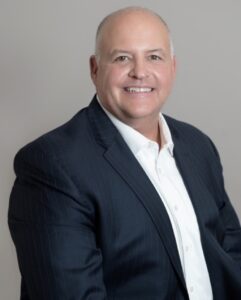This school year, administrators at New Jersey’s Wayne Township Public Schools set out on a bold mission to address a prominent issue plaguing schools across the country. Their goal: to reduce reports of bullying by 10%. As of April, they’ve more than quadrupled their expectations.

At one of the largest school districts in the state, Superintendent Mark Toback oversees some 7,700 students across his 15 schools. Like many education leaders, he explains this anti-bullying prevention and education initiative is a direct response to the behavioral changes students experienced post-COVID.
“We have a number of things we’re seeing that were outside what we normally see in terms of statistics about the district’s disciplinary actions, extreme behaviors, counseling needs, referrals, all of those things, which I think is part of a national trend,” he says.
As a result, the district had been tasked with addressing an increased number of HIB (harassment, intimidation and bullying) cases. However, it wasn’t until they began educating their students, staff and community-at-large about what’s considered HIB rather than a conflict that can be resolved through mutual conversation and resolution that they started to see a significant dip in reported cases. In fact, the district’s witnessed a 41% shrink in HIB investigations so far this year, says Scot Burkholder, director of student support services, federal, state and special programs.
He attributes a large number of their past-reported conflicts to disputes that originate via social media.
“There were a lot of cyber-driven conflicts, a lot of anxiety, self-esteem issues and emotional regulation issues,” he explains. “All of these issues interact with one another and are COVID holdovers.”
Getting to the root of the issue
Social media regulation can be a difficult task for school administrators. Even if you were to ban cell phone use at school—which many schools have done this year—a lot of these issues are likely to surface after school hours. Burkholder says creating awareness was their first step toward bullying prevention.
“We basically said, ‘We’re going to ensure our staff, our teachers, our support staff, our principals and our parents as partners in our district understand how to help students navigate conflict, engage properly with their peers and work out issues without making claims against one another,'” he says.

For instance, Jennifer Montana, supervisor of health and wellness, recently helped bring together school counselors from various schools in the district to present three presentations on bullying prevention, social media awareness and self-regulation ahead of one of their board meetings.
“We really do want to work with parents and our school community to be able to support students in learning these valuable skills,” she says.
Burkholder also says their success wouldn’t be possible without the work of their building administrators.
“Our exceptional principals and assistant principals, along with our professional school counselors, deserve the accolades for our anti-bullying efforts,” he says. “This highly skilled group of leaders spend countless hours each week meeting with students, parents and teachers to ensure all reports of possible billing and conflict become teachable moments for our students.”
Working with students to navigate their emotions
Burkholder explains that their counselors work closely with students on how to talk through their problems with their peers. It starts with teaching students how to talk through their emotions using “I” statements. For instance, “I feel this way because,” rather than, “You did this to me.”
More from DA: How 2024’s AP of the year is redefining PD for teachers
Toback says much of their federal COVID funding has been spent on hiring more counselors and mental health clinicians as well.
“It was interesting that the 120 or so spots that we had available with this contract were filled up almost immediately,” he says. It’s allowed students whose families lack the insurance to be able to receive the care they need during school hours, which he says has been instrumental.
“We feel like those were situations where students would definitely not have received those mental health services except for the fact that there was a significant investment and contract that allowed for those services,” says Toback.
Future planning
This summer, administrators and counselors will gather to review trends in parent and student reporting to set proactive goals for the next school year based on specific student concerns, notes Burkholder. This includes identifying targeted student populations, cyber conflicts, observing referral sources and looking at what resources or programs were provided to students after HIB reports and their effectiveness.
The information also allows them to customize their annual training on bullying prevention and de-escalation.
“We train not only teachers and administrators but also paraprofessionals, bus drivers, substitutes and other support staff every year to ensure students are safe and protected in spaces where teachers and certified staff are not always present,” he says.
“It takes a village. We have an exceptional staff who care deeply about student wellness.”










